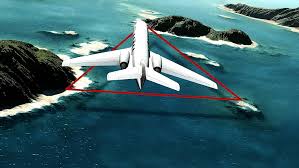The oceans have always fascinated mankind. Their mysterious depths, hidden ecosystems, and unexplored territories make them the final frontier of our planet. In 2023, the Titan submersible tragedy brought global attention to the dangers associated with deep-sea exploration. The catastrophic implosion of the Titan, operated by OceanGate Expeditions, not only led to the loss of five lives but also sparked discussions about safety, regulation, and the future of private undersea expeditions. This blog takes a detailed look at what happened, the science behind the implosion, and the broader implications for deep-sea tourism.
The Titan Submersible: A Brief Overview
The Titan was a 22-foot-long experimental submersible developed by OceanGate, a private company offering underwater expeditions to iconic wrecks like the RMS Titanic. Constructed with a combination of carbon fiber and titanium, the vessel was designed to reach depths of nearly 4,000 meters. Unlike traditional submersibles operated by governments or scientific institutions, Titan was a commercial vehicle, part of OceanGate’s business model that offered high-paying tourists and researchers a once-in-a-lifetime opportunity to see the Titanic wreck.
The Titan was equipped with limited navigational systems, a single viewport for observation, and basic life support systems for up to 96 hours. Passengers were required to sign waivers acknowledging the experimental nature of the sub and the risks involved.
The Tragic Dive: What Happened?
On June 18, 2023, the Titan embarked on a dive to the Titanic site in the North Atlantic Ocean with five people on board: OceanGate CEO Stockton Rush, British billionaire Hamish Harding, French Titanic expert Paul-Henri Nargeolet, Pakistani businessman Shahzada Dawood, and his son Suleman Dawood.
Approximately 1 hour and 45 minutes into the descent, the Titan lost contact with its support vessel, the Polar Prince. A large-scale international search and rescue operation was quickly launched, involving the U.S. Coast Guard, Canadian authorities, and several private entities. Days later, debris from the Titan was discovered roughly 1,600 feet from the Titanic’s bow. The findings suggested a catastrophic implosion, and all five passengers were declared dead.
What Is an Implosion?
An implosion is the inward collapse of an object due to extreme external pressure. At the depths where the Titanic rests—about 3,800 meters (12,500 feet)—the pressure is more than 375 times that at sea level. For a vessel to survive such conditions, it must be engineered with utmost precision.
The Titan’s unique carbon fiber hull was a point of concern for many in the engineering community. While carbon fiber is strong and lightweight, it behaves unpredictably under prolonged exposure to high pressure. Metal, on the other hand, has a proven track record of withstanding deep-sea conditions. The combination of materials and the absence of rigorous third-party certifications raised red flags, which were voiced by experts long before the incident.
Warning Signs Ignored
OceanGate had previously come under scrutiny for its approach to safety and certification. Stockton Rush, the company’s CEO, often expressed disdain for traditional certification standards, arguing that they hindered innovation. In fact, a former employee had raised safety concerns years earlier and was subsequently fired. Moreover, numerous deep-sea experts, including former employees and independent engineers, warned about the structural risks associated with the Titan’s design.
Despite these warnings, the company continued its operations, promoting its missions as safe and pioneering. The tragic outcome of the June 2023 dive seems to be a result of ignoring those warnings.
The Aftermath: Global Reactions and Investigations
The Titan implosion shocked the world. It not only drew attention due to the high-profile passengers on board but also because of the unique and horrifying nature of the accident. Multiple investigations were launched, including those by the U.S. Coast Guard, National Transportation Safety Board (NTSB), and Canadian authorities. These inquiries are focusing on:
-
The structural integrity of the Titan.
-
OceanGate’s operational protocols.
-
Possible lapses in regulatory oversight.
Public and industry reactions were swift. OceanGate suspended all operations, and the deep-sea tourism industry faced increased scrutiny. Questions were raised about the ethical and legal implications of taking civilians on such risky expeditions without adequate safety assurances.
Scientific and Engineering Lessons
The Titan tragedy highlights the importance of engineering integrity, third-party certification, and adherence to scientific principles in any high-risk endeavor. In deep-sea environments, even minor miscalculations can lead to disastrous consequences.
-
Material Science: The use of carbon fiber, while innovative, was controversial. Its performance under cyclic loading and high-pressure conditions needs further research before widespread adoption in submersible hulls.
-
Pressure Testing: Rigorous pressure testing and simulation of real-world conditions are essential to validate the safety of submersibles.
-
Regulations: There is a pressing need for clear, enforceable international standards for private submersibles, especially those engaged in commercial operations.
The Future of Deep-Sea Tourism
Despite the tragedy, human curiosity about the deep ocean will persist. However, the Titan implosion has undoubtedly set back commercial deep-sea tourism by several years. Future expeditions will likely face stricter safety requirements, more oversight, and perhaps new technologies designed with redundancy and reliability in mind.
Private companies may now partner more closely with governmental or academic institutions to ensure that innovation does not come at the cost of human lives. Public trust will need to be rebuilt, and that will only happen through transparency, accountability, and a renewed commitment to safety.
Conclusion
The Titan implosion stands as a somber reminder of both the allure and the peril of the deep ocean. While the tragedy captured headlines around the world, it also serves as a case study in what can go wrong when ambition outweighs caution. The loss of five explorers, who shared a passion for history and discovery, should not be in vain. Their story must inspire a more responsible, scientifically sound approach to deep-sea exploration in the years to come.
